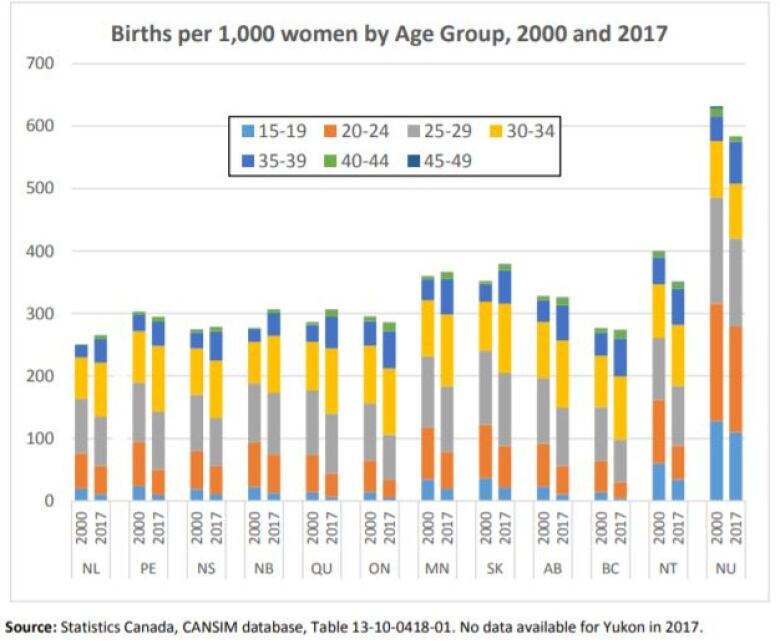Who's having babies and when has changed dramatically in Canada
Fertility rates of women under 30 fell in every jurisdiction, Calgary economist says

The fertility rates of Canadian women have undergone a dramatic shift since the turn of the century, dropping among women under 30 and rising for those in higher age brackets, according to a short paper released Thursday by a Calgary economist.
Statistics Canada figures from2000 to 2017 show thatfertility rates of women under 30 fell in every province and territory, except for women in New Brunswick aged 25-29 years, says the Ron Kneebone of the University of Calgary's School of Public Policy.
At the same time, fertility rates measured as births per 1,000 women increased in every province and territoryfor women aged 30 and older, with the exception of women in Nunavut aged 35 to 39.
"Younger women are having fewer and older women are having more," Kneebone said, adding that the shift has beenquite large despite the short time span.
For example, the fertility rate of teens aged 15 to 19 dropped by half in most jurisdictions, while for women aged 35 to 39 it typically rose by more than 60 per cent.

"I guess one of the big messages of the piece here is that public policy decisions can have real impacts on fertility decisions," he said, listing the cost and availability of daycare, housing,fertility treatmentsand parental leave as examples.
"All these things will impact a family's decision about whether or not to have a child or to delay having children," he said.
Kneebone says the relatively low rates of fertility for women aged 20-29 in Ontario and British Columbia where housing costs are especiallyhigh also points to the connection between public policy and women's fertility decisions.
"To really nail down the causation of these things, a lot more work needs to be done, but these results are suggestive that, in fact, these are influences," he said.
"But these are things we need to be aware of, because the implications are huge. If women are delaying having children, then that creates a demographic bulge that moves through the economy over the next 40, 50, 60 years. And that can have some important effects."
Kneebonealso notes thefertility rate is generally higher among Indigenous women, which explains why there aremuch higher overall rates in the Northwest Territories and Nunavut, which have big Indigenous populations. (Recent data wasn't available for Yukon.)
Impact of sex education
Kneebone says thefalling fertility rate among 15- to 19-year-olds seems to have been driven by the greater prevalence of sex education in schools.
"There's research that certainly supports the idea that more and better sex education does have an effect on fertility," he said.
Kneebonesays the trend toward women having babies in their 30srather than in their 20s is likely also a reflection that women are completing higher levels of education to compete for better paying jobs, which has been good for the workforce and the economy.
"As a society, we have to make decisions about whether or not we want to encourage earlier fertility or later fertility, having children earlier or later, and there are pros and cons to both those things," he said.
"It's probably good for society that we can now take advantage or make use of the skills of the female population more than we could before."












_(720p).jpg)


 OFFICIAL HD MUSIC VIDEO.jpg)
.jpg)



























































































